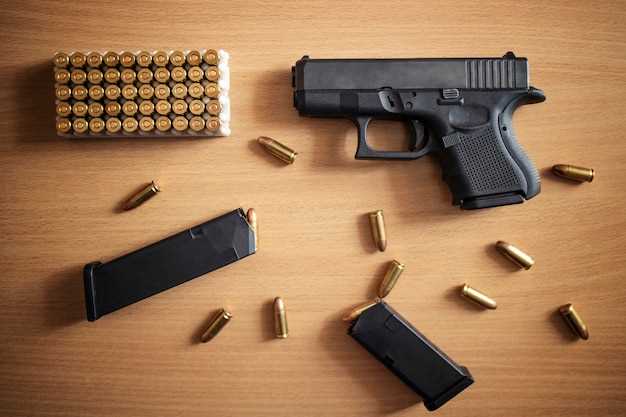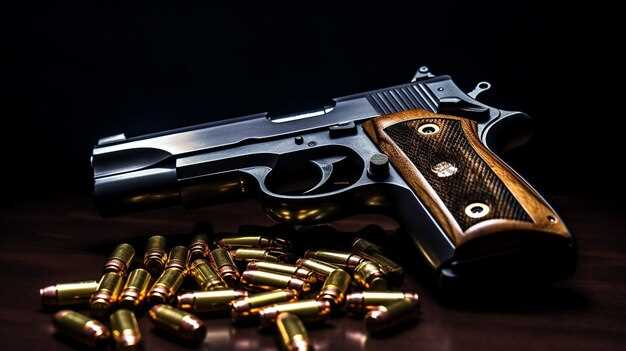
The debate between Smith & Wesson and Ruger is one that has persisted among firearm enthusiasts for decades. Both brands have established their reputations in the shooting community, known for their durability, reliability, and innovative designs. However, distinguishing which brand offers superior quality can be an intricate task, as it often depends on individual preferences and intended use.
Smith & Wesson has long been synonymous with revolvers and semi-automatic pistols, boasting a legacy that spans nearly two centuries. The brand is renowned for its craftsmanship and attention to detail, which have contributed to its loyal customer base. On the other hand, Ruger, although younger, has made significant strides in the firearms market, focusing on offering a wide range of affordable and high-quality firearms. This has allowed Ruger to attract both novice shooters and seasoned professionals alike.
In this article, we will delve into various aspects of both brands, examining their offerings, construction methods, and performance metrics. By assessing factors such as materials, reliability, and user feedback, we aim to provide a comprehensive comparison to help prospective buyers determine which brand–Smith, Wesson, or Ruger–aligns better with their shooting needs and expectations.
Smith & Wesson vs Ruger: Which Brand Offers Better Quality?

When it comes to the firearm industry, both Smith & Wesson and Ruger are regarded as leading brands, each with a rich history and a loyal following. The debate over which brand offers better quality is nuanced and depends on various factors, including specific types of firearms, intended use, and personal preferences.
Smith & Wesson, founded in 1852, is known for producing high-quality revolvers and semi-automatic pistols. Their firearms are often praised for their accuracy, durability, and ergonomic designs. Models like the M&P series are favored for law enforcement and self-defense due to their reliability and ease of use. Furthermore, Smith & Wesson is recognized for its innovative features and modern designs that cater to a wide range of shooters.
On the other hand, Ruger, established in 1949, has built a reputation for creating rugged and dependable firearms at affordable prices. The company’s product line includes rifles, handguns, and shotguns, appealing to hunters, sport shooters, and tactical users. Ruger firearms are often noted for their robust construction and straightforward maintenance, making them a practical choice for many gun owners. Additionally, Ruger tends to offer a wider variety of calibers and configurations, enhancing their appeal for customization.
Quality comparison also involves customer service and warranty program. Smith & Wesson provides solid after-sales support, which is essential for addressing any potential issues. Ruger, too, has a strong reputation for customer service and backing their products with a reasonable warranty period.
In conclusion, determining which brand offers better quality ultimately hinges on the shooter’s needs. Smith & Wesson may provide superior precision and advanced features for those prioritizing performance, while Ruger stands out in terms of affordability and ruggedness. Prospective buyers should assess their requirements and preferences to choose the brand that best fits their shooting lifestyle.
Comparative Analysis of Build Quality in Smith & Wesson Firearms

When evaluating the build quality of firearms, Smith & Wesson stands out as a brand synonymous with reliability and precision. Established in 1852, Smith & Wesson has a long history of innovation in firearm manufacturing, which contributes to its reputation for quality. The materials used in their products, such as stainless steel and high-grade polymer, ensure not only durability but also a stable performance under various conditions.
In contrast, Ruger is known for producing robust firearms that emphasize practicality and function. While Ruger also employs quality materials, their firearms often focus more on cost-effectiveness without compromising essential performance. The disparity in design philosophy between Ruger and Smith & Wesson can significantly affect the overall build quality of their firearms.
Examining specific models reveals key differences in build quality. For example, the Smith & Wesson M&P series is engineered for both law enforcement and civilian use, featuring precise machining and enhanced ergonomic designs. This attention to detail results in a firearm that not only performs reliably but also feels good in hand.
On the other hand, Ruger’s popular models, such as the SR series, prioritize ease of use and maintenance. These firearms are often heavier due to their construction but are praised for their ruggedness and ability to withstand extensive handling. While they may lack some refinements seen in Smith & Wesson models, Ruger’s consistency in manufacturing ensures a dependable firearm.
Another factor impacting build quality is the assembly process. Smith & Wesson employs stringent quality control measures at multiple stages, leading to higher production costs but ultimately yielding products that enthusiasts and professionals trust. Ruger’s approach can be more streamlined, which benefits affordability but may occasionally result in less meticulous final assembly.
In conclusion, while both Smith & Wesson and Ruger offer quality firearms, the build quality of Smith & Wesson tends to reflect a greater commitment to detail and performance. Buyers looking for precision and reliability often gravitate towards Smith & Wesson, while those who favor practicality and cost-effectiveness might find Ruger more appealing. Ultimately, the choice between the two brands will depend on individual preferences and intended uses.
Performance Metrics: Accuracy and Reliability of Ruger Models
When comparing performance metrics, accuracy and reliability are essential factors for evaluating firearms, particularly among brands like Ruger and Smith & Wesson. Ruger models have built a reputation for impressive specifications that contribute to their performance in various shooting scenarios.
Accuracy is often assessed through several aspects:
- Barrel Quality: Ruger employs high-grade materials and precise manufacturing processes to ensure that the barrels of their firearms provide enhanced accuracy. The quality of rifling and bore dimensions plays a crucial role in bullet stabilization.
- Sight Systems: The adjustable sights on many Ruger models allow for fine-tuning, ensuring that shooters can achieve the best possible aim. Some models even facilitate the installation of optics, further improving precision.
- Trigger Performance: The feel of a Ruger trigger is engineered for consistency and a clean break, which aids significantly in achieving accurate shots. A smooth trigger pull minimizes the chances of jerking the gun and affects overall shooting precision.
Reliability is another cornerstone of Ruger’s reputation, characterized by the following points:
- Durability: Ruger firearms are designed to withstand harsh conditions, featuring robust construction that leads to fewer malfunctions even after extensive use.
- Feeding and Ejection: Many Ruger models demonstrate reliable feeding and ejection of cartridges, minimizing jams and ensuring smoother operation during sessions on the range or in the field.
- Consistency: Users often report consistent performance across various ammunition types, which positions Ruger favorably compared to competitors like Smith & Wesson.
In summary, Ruger models stand out for their accuracy and reliability, reinforced by quality manufacturing and thoughtful design. Shooters looking for dependable performance may find Ruger offerings to be advantageous, especially when making comparisons with Smith & Wesson products.
Customer Feedback and Longevity of Smith & Wesson vs Ruger
When comparing customer feedback and longevity between Smith & Wesson and Ruger, it’s important to consider the experiences of gun owners over the years. Both brands have established reputations, but they cater to slightly different demographics and preferences.
Smith & Wesson firearms are often praised for their accuracy and overall performance. Many users report satisfaction with their durability and reliability, particularly in revolvers and semi-automatics. Customers frequently note that their Smith & Wesson firearms perform consistently even after years of regular use, which contributes to a high level of trust among enthusiasts. This longevity is a significant factor for buyers looking for a firearm that can withstand time and varied conditions.
Conversely, Ruger is known for producing robust and practical firearms, appealing to both novice shooters and experienced marksmen. Customer feedback highlights Ruger’s affordability without compromising quality. Many users appreciate the intuitive design of Ruger models, making them easy to maintain. The longevity of Ruger pistols and rifles often matches that of Smith & Wesson, with users reporting excellent performance over extended periods.
In conclusion, both Smith & Wesson and Ruger receive favorable customer feedback regarding their quality and longevity. While Smith & Wesson is often lauded for precision and performance, Ruger attracts buyers with its great value and user-friendly designs. Ultimately, the choice may come down to personal preference and specific needs in handgun or rifle use.
